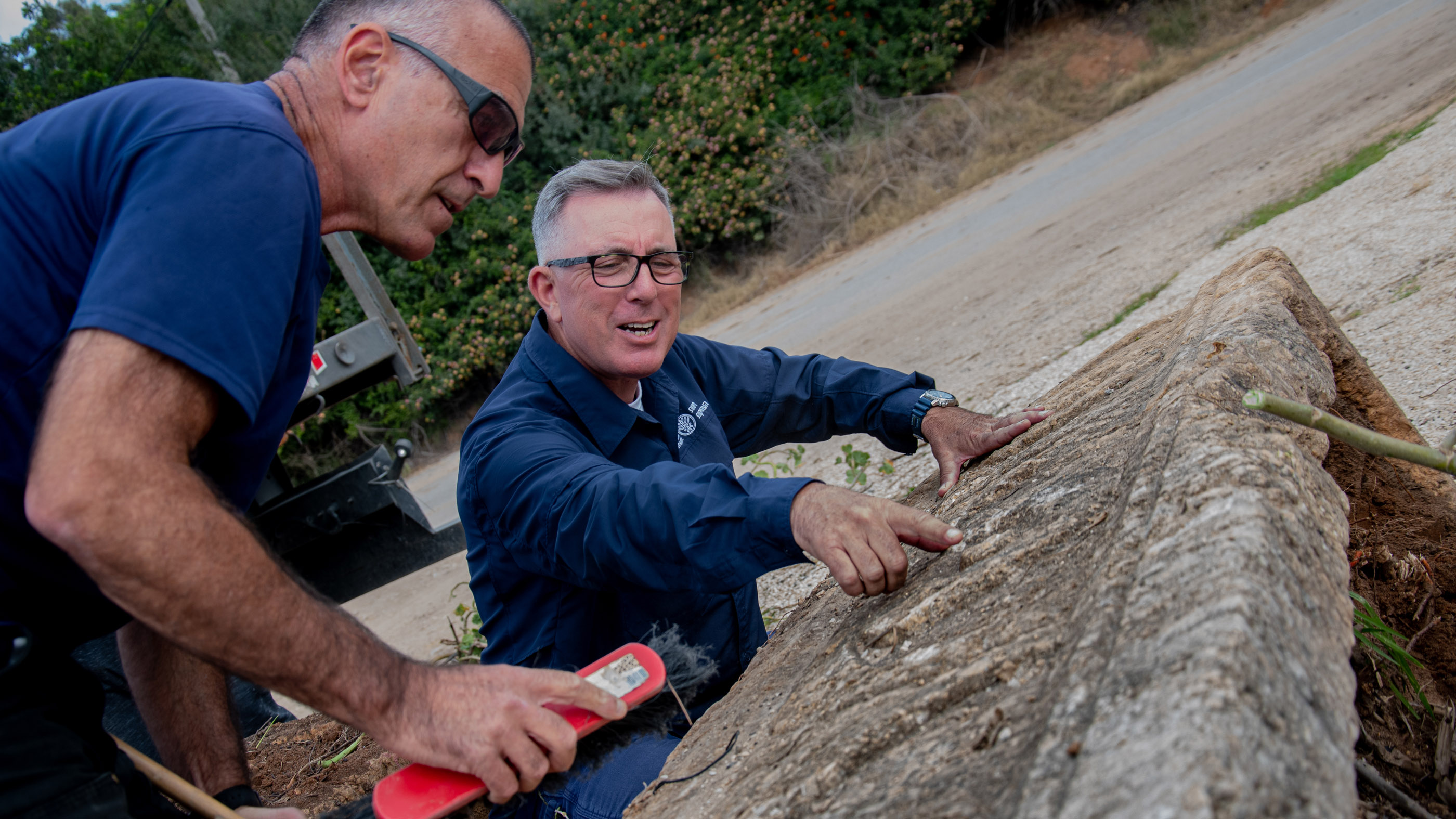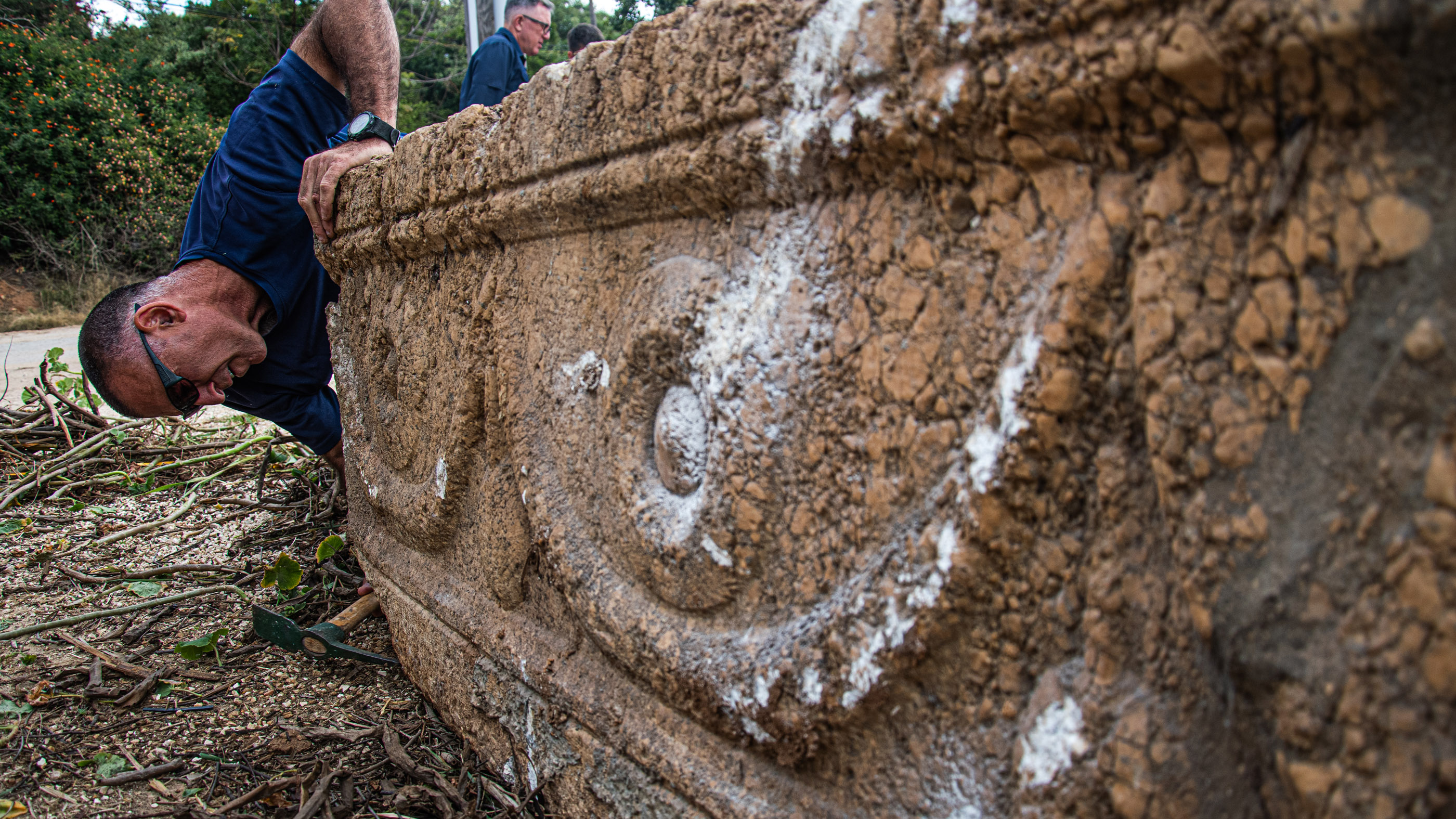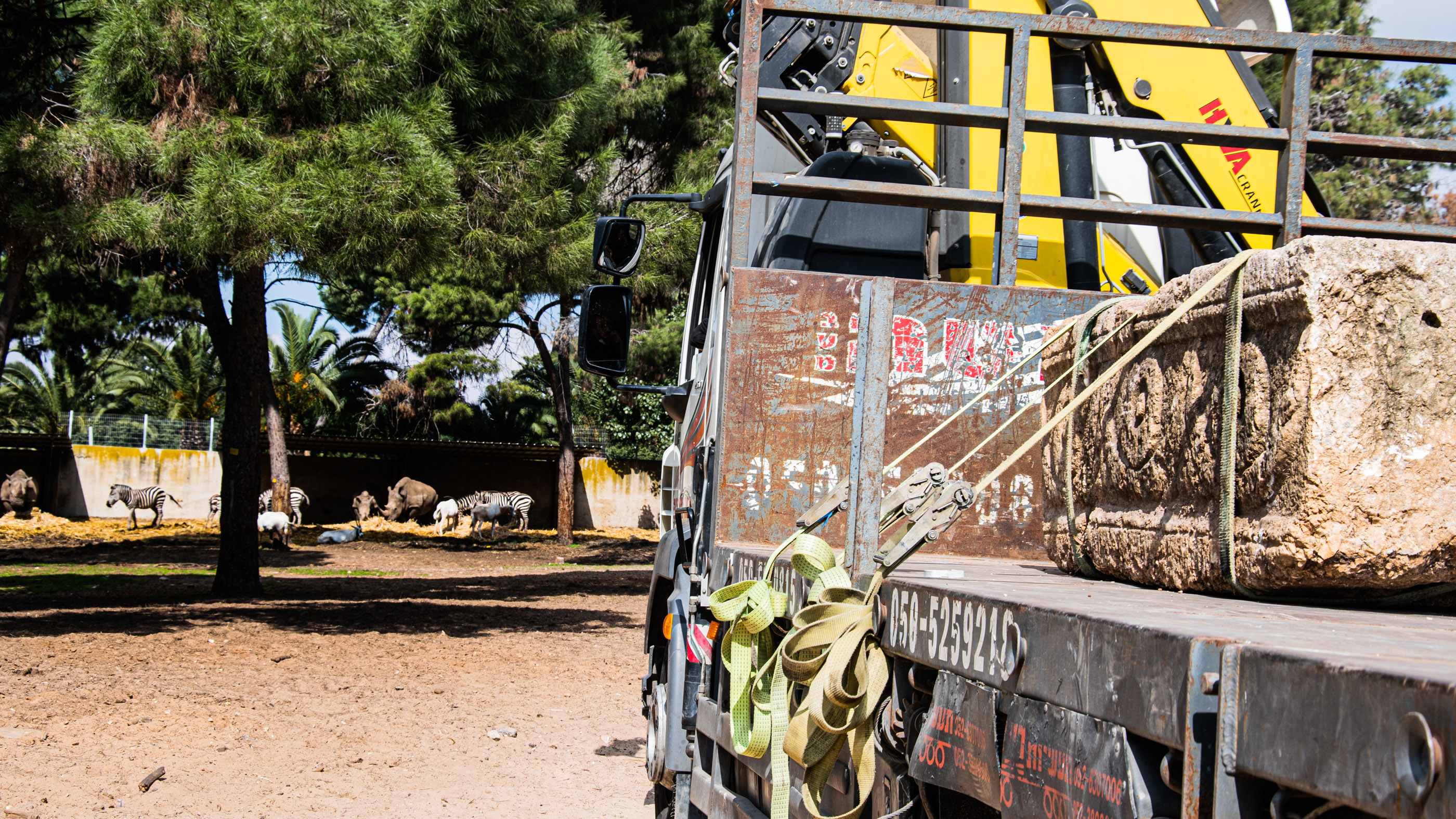2 ancient stone coffins for husband and wife unearthed at Israeli wildlife park

Two ancient stone coffins that may have once held the remains of a husband and wife have been rediscovered in a wildlife park near the Israeli city of Tel Aviv.
They are thought to be about 1,800 years old, dating from the period when the Roman Empire ruled the region.
The stone coffins, or sarcophagi, were found mid-February, hidden near enclosures for giraffes, elephants and a bird nursery. Some of the park's older staff recalled that the coffins had first been discovered about 25 years ago during the construction of a new parking lot. But they were dug up, moved elsewhere at the site, and then forgotten again, until they were rediscovered during work on a new extension for the park's animal hospital.
"They are two matching coffins … decorated identically with garlands and discs," Uzi Rothstein of the Israel Antiquities Authority (IAA), said in a statement. The similarities of the coffins is what led Rothstein and his colleagues to speculate they belonged to a couple."
Related: Photos: 2000-year-old Roman road and coins discovered in Israel
Experts think the ornate decorations show the coffins were meant for non-Jewish people of high social status during the period, when the region was dominated by the ancient port city of Jaffa and the Roman provincial capital of Caesarea was about 20 miles (32 kilometers) to the north.
Archaeologists have now transferred the coffins into a nearby repository for Israeli National Treasures.
Get the world’s most fascinating discoveries delivered straight to your inbox.
Surprise find
The Ramat Gan Safari Park was built on the site of a small zoo founded in 1958 and opened in 1974 with the largest collection of wildlife under human care in the Middle East.
It's now a 250-acre (100 hectares) drive-through park that features zebras, lions, giraffes, elephants, hippos and other animals.
According to the IAA statement, construction workers clearing land for the new extension of the animal hospital saw the two stone coffins jutting out of the soil. After clearing away thick vegetation and the sand surrounding the coffins, they alerted staff at the park who got in touch with Rothstein and his colleagues.
Rothstein said they were astonished to see such ancient artifacts at the wildlife park, and that the contractor who first discovered them 25 years ago probably didn't realize their significance.
"The contractor cleared two stone structures and transported them to a farther area without having any idea of what he was dealing with," he said.
The coffins are made from stone that likely came from the Judaean Hills or Samaria close by, possibly in imitation of prestigious sarcophagi made from Proconnesian marble from the Turkish island of Marmara.
Their decorations include symbolic discs intended to protect and accompany the soul on its journey to an afterlife, and stone garlands of flowers.
The decorations also included oval blank spaces on the stone between the garlands, which the archaeologists think were intended for customary grape-cluster motifs; but for some reason the work on the coffins remained unfinished, Rothstein said.





Roman rule
The region where the coffins were found came under the control of the expanding Roman Empire in 63 B.C., after Roman legions under the general Gnaeus Pompeius Magnus — Pompey the Great — defeated the forces of the ruling kingdom of Pontus in the Third Mithridatic War.
The Romans initially ruled the region as part of the province of Syria, and they established a client kingdom there — named Judea, after the ancient Israelite kingdom of Judah — under Herod the Great in 37 B.C.
A few years after Herod's death in 1 B.C., the Emperor Augustus deposed Herod's unpopular son Archelaus and the region became directly controlled by Rome as the province of Judea.
Related: Biblical battles: 12 ancient wars lifted from the bible
That status lasted through several violent uprisings until A.D. 132, when Jews there staged a rebellion known as the Bar Kokhba revolt and attempted to establish an independent state.
But the revolt was crushed by the Romans, and in A.D. 135 the Emperor Hadrian resolved to wipe the name Judaea off the map; so he renamed the province Syria Palaestina, after the Philistines who had ruled cities on the coast many centuries earlier.
The Ramat Gan Safari Park is close to the site of the biblical city of Beneberak, which is famous in Jewish writings as the home of the sage Rabbi Akiva ben Yosef — the spiritual leader of the Bar Kokhba revolt; he was executed by the Romans in 135.
"It could be that the sarcophagi are connected to the ancient city, it could be that they are not," Rothstein told the Jerusalem Post. "It is very rare to find sarcophagi in general and especially in their original site."
Originally published on Live Science.
Tom Metcalfe is a freelance journalist and regular Live Science contributor who is based in London in the United Kingdom. Tom writes mainly about science, space, archaeology, the Earth and the oceans. He has also written for the BBC, NBC News, National Geographic, Scientific American, Air & Space, and many others.


